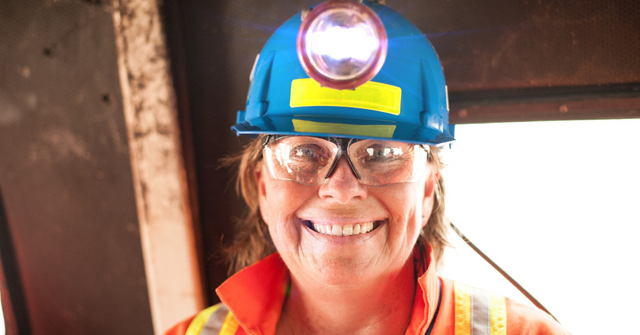
A snapshot of AusIMM’s Women in Mining Survey, released to mark International Women’s Day this week, is a mixed bag of good news and bad.
A snapshot of AusIMM’s Women in Mining Survey released to mark International Women’s Day this week is a mixed bag of good news and bad.
While it found 85% of respondents were earning more than the average female salary and mining workplaces were generally becoming more diverse and accepting, the survey also found women in mining face challenges around bullying, discrimination and inequitable treatment.
Let’s dig into the data AusIMM has released so far.
What women want
More than 550 people responded to this year’s survey, which gathers vital information on the experiences, perspectives and priorities of women working across the sector. Of those who responded, close to 63 per cent were in senior or lead professional roles (an increase of 6 percentage points on 2021 results), 99% had a tertiary qualification (up four percentage points on 2021) and 68% had been working in the industry for 10 years or more.
This year, respondents were asked to indicate what they valued most about the work in the mining industry. Participants ranked their priorities from a list of fifteen options. These are the top five:

A positive team culture, respectful working environment and work-life balance are key drivers of career satisfaction for women in mining.
READ MORE: What’s it like working on a mine site for a woman?
Many challenges remain
The survey also looked at perceptions of diversity, inclusion and safety in the mining industry. AusIMM Chief Executive Stephen Durkin said the findings were “confronting”.
- 70% of female respondents said bullying is common
- 85% said gender inequality is common
- Almost 67% of female respondents said sexual harassment is common (more than double the proportion of male respondents).
After some high-profile incidents in the past year, it’s likely many mining companies would have tackling these issues very high on their priority list, so we’d hope to see some movement in these areas in future surveys.
READ MORE: How supportive is mining of women?
Durkin said the findings prove that the challenges facing women in mining are not isolated to a single company, region, professional role or working environment.
“(The findings) reflect an industry where many do not feel safe to go to work, and are not getting the support they need to advance,” he said.
Diversity and inclusion in mining
Let’s look at some other key data points AusIMM has released.
- 58% of respondents said the industry was not diverse, 51% said it was not inclusive (both figures were up on last year)
- 41% of women in FIFO and DIDO roles said workplace inclusion and diversity were poor
- Just 30% of female respondents believe their organisation is committed to reflecting, learning and growing based on women’s experiences
- 43% of female respondents believed remuneration was equitable (compared to 70% of male respondents).
READ MORE: Men and women agree on mining workplace gender support
But the news wasn’t all bad. There are green shoots.
- 64% of respondents believe the resources industry is becoming more diverse and inclusive
- Three times as many respondents believe their workplace is very diverse, compared to the broader industry
- Five times as many female respondents believe their workplace is very inclusive, compared to the broader industry
- 56% of female respondents believe their employer values work-life balance.
Asked to indicate what they most value in their careers, female respondents emphasised the satisfaction that comes with interesting, technically complex and fulfilling work.
READ MORE: Is there a gender pay gap in mining and how big is it?
More needs to be done for women in mining
Speaking at AusIMM’s International Women’s Day Event in Sydney, Durkin said the survey results emphasise the importance of advocating and providing a platform for women in mining to share their experiences.
He also emphasised the importance of educating and developing resources professionals to drive cultural change, while supporting women to progress into senior positions across the industry.
READ MORE: 6 ways mining can improve participation for women
“We need to mobilise and equip our resources professionals to actively prevent harmful and discriminatory behaviour wherever they see it,” he said. “That is the power of a professional community such as ours,” he said.
AusIMM runs the Women in Mining network and programs such as the Women on Boards Scholarship and National Mentoring Program.
“As a sector, the need to do more is clear,” Durkin said. “For AusIMM, we need to double down on the programs we know deliver real benefits for women in mining, and look at what further levers we have available through our research, advocacy, partnerships, professional standards and education.”
The full AusIMM Women in Mining Survey report will be released in late March.
To be considered for unlisted jobs, make sure to register with us so we have your details on file.